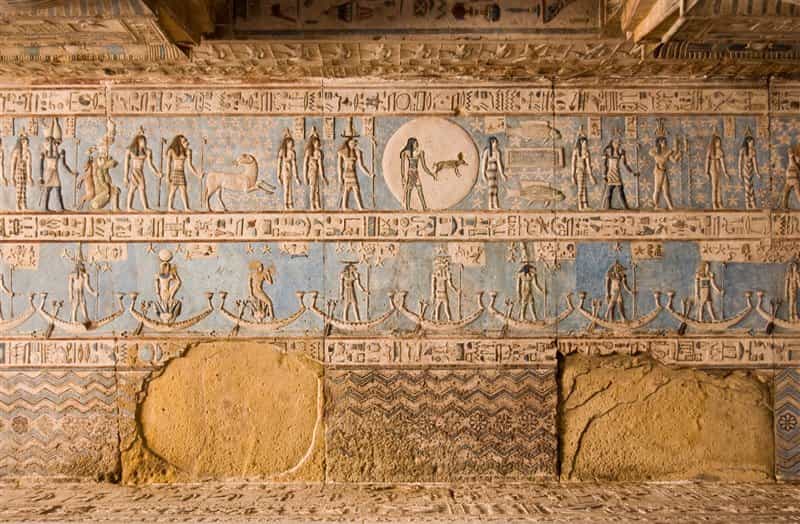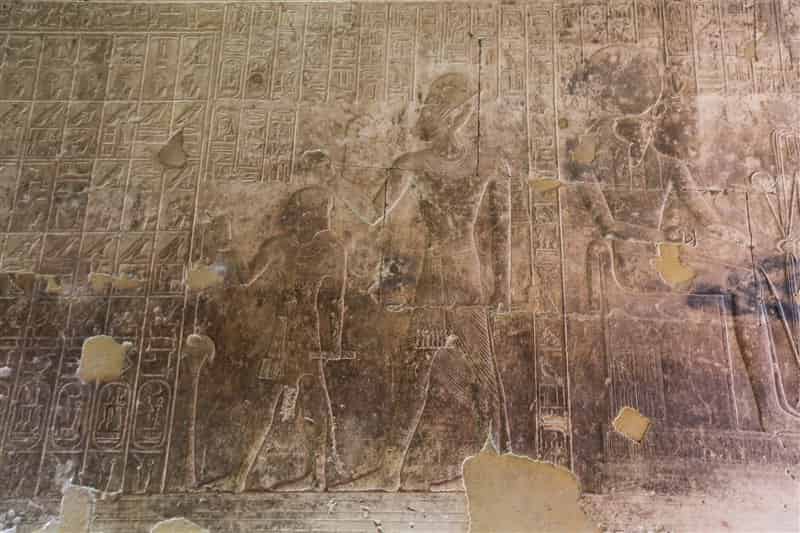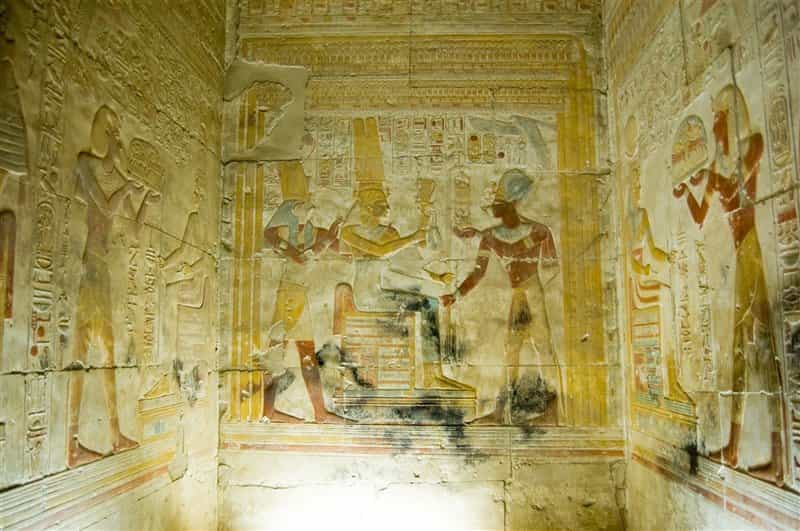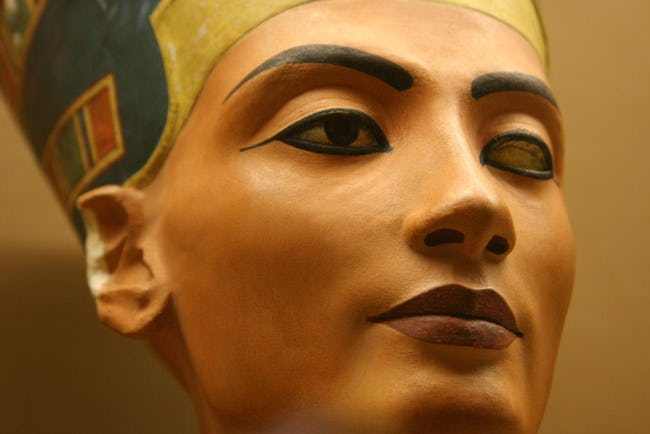Seti I, second pharaoh of the 19th dynasty and father of the great Ramses II, had his funerary temple built at Abydos, the most important cult center of Osiris, the god of the afterlife, in Egypt. The magnificent decorations that run through its walls still fascinate modern visitors today.
The Royal Burial Structure of Pharaoh Seti I at Abydos is a magnificent example of Egyptian architecture.
“They were incomplete structures with pillars that weren’t put in their proper places, and the statue of Seti was lying on the ground.”
As Ramses II, the new pharaoh of Egypt and the son of the late Seti I (1290-1279 BC), expressed his displeasure with building his father’s burial temple at Abydos, he was quoted as saying.
After becoming enraged, the new king of the two lands decided to assume control of the construction project and establish himself as a builder pharaoh in this region.
He was in charge of ensuring that the work was carried out correctly and that the depth of his filial piety was passed on to future generations, which he expressed in the following inscription: “Compassion is a wonderful gift.
It is beneficial for a son to show concern for and take care of his father.” The fact that Ramses loved his father did not prevent him from glorifying himself in his father’s sanctuary and having himself depicted as a triumphant commander on the walls of his father’s sanctuary’s first courtyard.
In Search of Legitimate Opportunities
Abydos was Egypt’s sacred center since it was the site of the deity Osiris’s tomb. This settlement was located 170 kilometers north of Thebes (and 480 kilometers south of present-day Cairo).
Thousands of pilgrims from around the nation came to the place to pay their respects to the deity of the afterlife during the celebrations conducted in his honor. Seti was well-informed when he selected Abydos as the site for his funeral temple.
It is believed that this decision was made to strengthen the legitimacy of the pharaoh’s position (as neither his father Ramses I nor his mother, Sitre, were of royal blood), as by building his temple in such a sacred location, Seti linked his name to that of the lord of the underworld, one of the gods of Egypt who had an older cult.
Ramses II, Seti’s heir, was shown on the walls of his temple, and Seti commissioned that he be depicted with him.
During one of these scenarios, both pharaohs sat over an extensive list of predecessors that stretched back to the dawn of time. Narmer served as Egypt’s first ruler and unifier 1,600 years ago.
Seti and Ramses represented dynastic continuity, both were shown in reliefs that stretched from floor to ceiling, in which both seemed to be carefully performing their religious duties, accompanied by the gods, and both were embodied in reliefs that went from floor to ceiling. Prayers are spoken by the father and son, and wine and food are offered.
All of the fares shown in the images must sustain the gods for all time, including birds, cattle, vegetables, fruits, and bread. They are regarded as one of the most exquisite examples of Egyptian art because of their delicate construction.
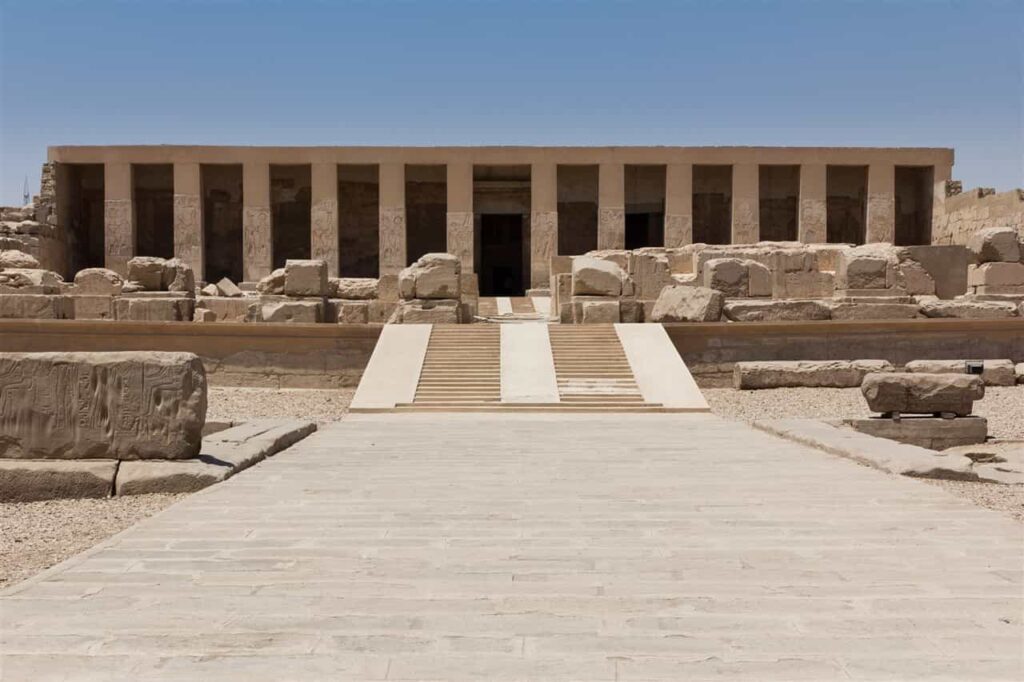
A Temple Built for the Pharaoh and the Gods
A slight deviation from Egyptian construction tradition may be seen in the temple erected in honor of Seti I (a structure referred to as Memnonium by the Greek historian Strabo), constructed of white limestone and has an “L” design rather than a rectangular layout.
Ramps and stairs span a total of sixty columns in this structure, which features two towers, two atriums or double patios, and two hypostyle rooms.
The sanctuary area is accessible from the back of the second hypostyle room, which contains seven chapels (whose roofs were built with flat stone slabs and are decorated with royal cartridges and stars) that housed the images of the gods (these statues were bathed, dressed in clean clothes, and given food and drink daily by the priests) and Seti himself.
They were devoted to Seti I, Ptah, Ra Horakhty, Amun Ra, Horus, Osiris, Isis, and other deities.
You can access a small hypostyle room with ten columns from the Osiris chapel, whose walls the king appears to make offerings to Osiris.
This space contains another room with four columns and six chapels, three on the left and three on the right (one of them is dedicated to the goddess Isis, wife, and sister of Osiris, to whom the pharaoh offers two glasses of wine in a relief).
One of the reliefs represented in this area dedicated to Osiris is loaded with symbolism. It shows the sanctum of the god, an object that supposedly contained his severed head, located in a shrine (the sanctum of Osiris was one of the most revered objects in Abydos and was carried in procession before a moving crowd).
A long passageway, known as the Gallery of the Lists (also known as the Gallery of the Kings or Corridor of the Ancestors), leads to the left of the chapels and is presided over by Seti and Ramses.
It contains the names of all of Egypt’s kings dating back to the beginning of its history, including Ramses. Seti’s predecessors were commemorated on the gallery walls with cartridges carrying their names inscribed on the museum walls.
Nevertheless, the pharaoh has omitted the names of certain kings who have suffered a damnatio memoriae “condemnation of memory”, which means that they have been wiped from history because they were not deemed worthy of the positions they held in the past.
Several Hyksos rulers, other kings of the Mid-Kingdom, including Intef I, Intef II, Intef III, and Mentuhotep I, and certain sovereigns of the New Kingdom, including Queen Hatshepsut, Akhenaten, Smenkhkare, Ay, Tutankhamun, and Queen Sobekneferu, have been identified as having similar traits.
After that, there was only one name left on the list: Seti I, the pharaoh who, in his funeral temple, determined whether or not the sovereigns who had governed Egypt from the beginning of time were legitimate.
Source: Carme Mayans, National Geographic
